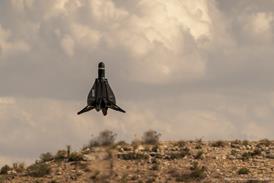FAA today said it has finalised a rule effective 19 November that it believes should bolster safety in the Hudson River corridor by separating low-altitude, local aircraft flights from those transiting through the river's airspace.
The rule stems from an 8 August collision between a single-engine Piper Saratoga and a Eurocopter AS350 under visual flight rules.
"These changes will define separate corridors for aircraft operating locally and those flying along the Hudson River area," says FAA Administrator Randy Babbitt. "Separating aircraft on different missions and improving pilot situational awareness will add more layers of safety to this high-demand airspace."
Under the new rules procedures that were previously recommended are now mandatory. The new requirements for pilots include maintaining a speed of 140 knots or less, turning on anti-collision and aircraft position/navigation lights, if equipped, self-announcing the aircraft's position on specific radio frequencies and the carrying of charts for the specific airspace.
FAA explains that in an exclusion zone below 1,300ft over the Hudson River, pilots must announce their aircraft type, direction and altitude at chartered mandatory reporting points, and must stay along the New Jersey shoreline when southbound and along the Manhattan shoreline with northbound.
Those pilots transiting the Hudson River must fly at an altitude between 1,000 and 1,300 ft. Local flights are required to operate in the lower airspace below 1,000ft.
The final rule also incorporates provisions included in an October 2006 Notice to Airman that restricted fixed-wing aircraft in the exclusion zone over the East River to seaplanes landing or taking off on the river or those specifically approved by FAA air traffic control.
Source: Flight International























